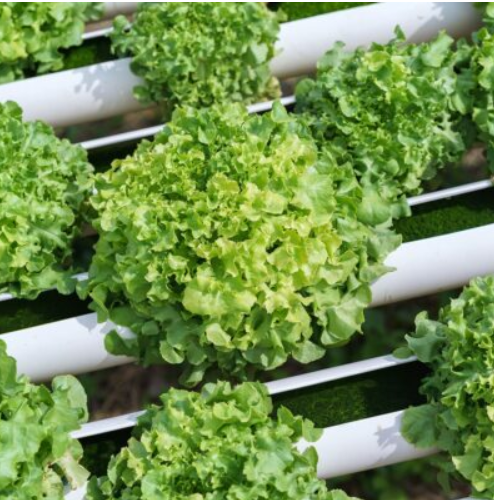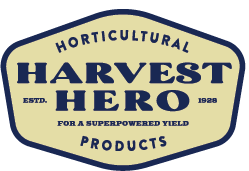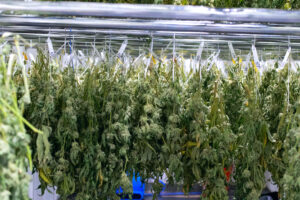What’s the Best Growing Media for Hydroponic Systems?

When some people first hear about growing with a hydroponic system, they might imagine a growing environment made only with water. Fortunately for your plants, this isn’t true. Yes, hydroponics does involve growing without the support of soil, but plants do have support beyond the H2O. In fact, many growers use hydroponic media to support roots and maintain the correct oxygen-to-water ratio, and there are many options to choose from depending on the type of setup you’d like to create. Learn about your growing media options for hydroponic systems to help you make the best choice for your growing goals.
What to Consider When Choosing a Growing Media for your Hydroponic System
When it comes to choosing the right hydroponic growing media for your system and goals, there are many things to take into consideration. When comparing options, ask yourself these things:
- Oxygen and water retention: How well will this media choice retain water and oxygen?
- Nutrient profile: Will the media hold nutrients, or will you need to frequently add fertilizer directly to the hydroponic system?
- pH: What is the natural pH of the media, and will you need to amend your system to ensure proper growing pH levels?
- Storage: Will your media be susceptible to rot and decay during storage?
- Compatibility: Will this media work with your hydroponic system?
- Weight: Do you have any restrictions for the weight you are willing to work with?
- Sustainability: Is it important to you to choose a media that is a renewable resource?
Growing Media for Hydroponic Systems
Coco Coir
Coco coir is a popular soil amendment, and many hydroponic growers find it a useful growing media as well. It is made from ground coconut husks. Just like the husk is beneficial for the coconut, coco coir can be beneficial for your plants.
Benefits
- Typically organic
- A renewable resource
- A hormone-rich, fungus-free media
Drawbacks
- It can hold a lot of water and may drown plants
- Built-up salts are a known issue when using coco coir in your hydroponic system
Clay Pellets
As the name suggests, clay pellets are porous clay balls. Go back in a time a few years, and many people would tell you clay pellets are the way to go when it comes to your hydroponic media.
Benefits
- Reusable media
- Neutral pH
- Does not compact
- Releases no nutrients so you have more control over the nutrient profile of your system
Drawbacks
- This media is heavy and adds to the already-heavy water system
- Dry out and age fast, possibly leading to dry roots
- Roots may get entangled in the pellets
Starter Plugs
Starter plugs are a relatively new media for the hydroponic growing community. They are comparable to sponges made of organic compost, and many people like them for new seeds and cloning.
Benefits
- Compact for easy storage and use
- A good choice for starting seeds where roots should grow down, not out
- More sustainable than other options
Drawbacks
- Starter plugs are not recommended for mature plants (only starting seeds and cloning)
- They can be expensive
Rockwool
Rockwool has been around the soil, soilless, and hydroponic growing communities for decades. Similar to fiberglass, it is made by melting rock that is then spun into long, thin fibers. These fibers are then pressed into cubes of various sizes. While it does have some nice benefits, the drawbacks tend to make growers stay clear.
Benefits
- Retains water well
Drawbacks
- Fibers and dust are dangerous to your health, causing harm to your eyes, nose, and lungs
- Not easy to dispose of because the melted rock doesn’t decompose
- Typically has a high pH and needs to be amended
Sand
If it works for nature, it might work for you, too! Sand is one of the most abundant soil media resources on the planet, so you won’t have to look hard to find some for your hydroponic system. In fact, it’s considered by some to be one of the oldest hydroponic media.
Benefits
- Inexpensive (if not free)
- Can be found nearly anywhere
- Has no nutrient load so you can customize your own fertilizer plan
Drawbacks
- Harder to work with because of its heavy weight
- Holds little water
- Small particle size isn’t right for every hydroponic system
Rice Hulls
Rice hulls, also known as rice husks, are the hard protective shells around grains of rice. Rice hulls are used in soil media mixes and hydroponic systems.
Benefits
- Retains little water
- Gives purpose to a resource that might otherwise be thrown away
Drawbacks
- Decays over time and has a limited shelf life
Gravel
If it works for fish tanks, can it work for your plants? Many growers say you can use any type of gravel as a DIY starter media if you don’t have the money to use a more efficient media.
Benefits
- Inexpensive and can be found almost anywhere
- Cleans easily
- Drains well
Drawbacks
- Heavy weight, making it harder to work with and store
- Not compatible with all hydroponic systems
- Might dry out plant roots
Perlite
Perlite is a mineral that is formed by molten rock, also known as volcanic glass. It is one of the most tried and true growing media for hydroponic gardening in addition to soil and soilless mixes.
Benefits
- High oxygen retention level
- Inorganic and doesn’t decompose or break down
- Neutral pH
- Lightweight for easy use and storage
- Sustainable
Drawbacks
- It might be too lightweight for some systems
- Potential particle inhalation concerns if not used properly
Take the Guesswork out of Choosing Your Growing Media for Hydroponic Systems
We know growers can have great success growing hydroponically and using soil media mixes, so we developed our Hydroponic Perlite to support both growing methods. Our Hydroponic Perlite is a medium-grade, 100% sterile horticulture perlite that is OMRI listed. Get ready to grow further with these amazing benefits:
- Allows for greater air availability
- Provides superior water drainage
- Holds nutrient-enriched water and distributes evenly
- Regulates pH fluctuations
- Increases yields and potency
Shop now and try it today and grow further with Harvest Hero!



